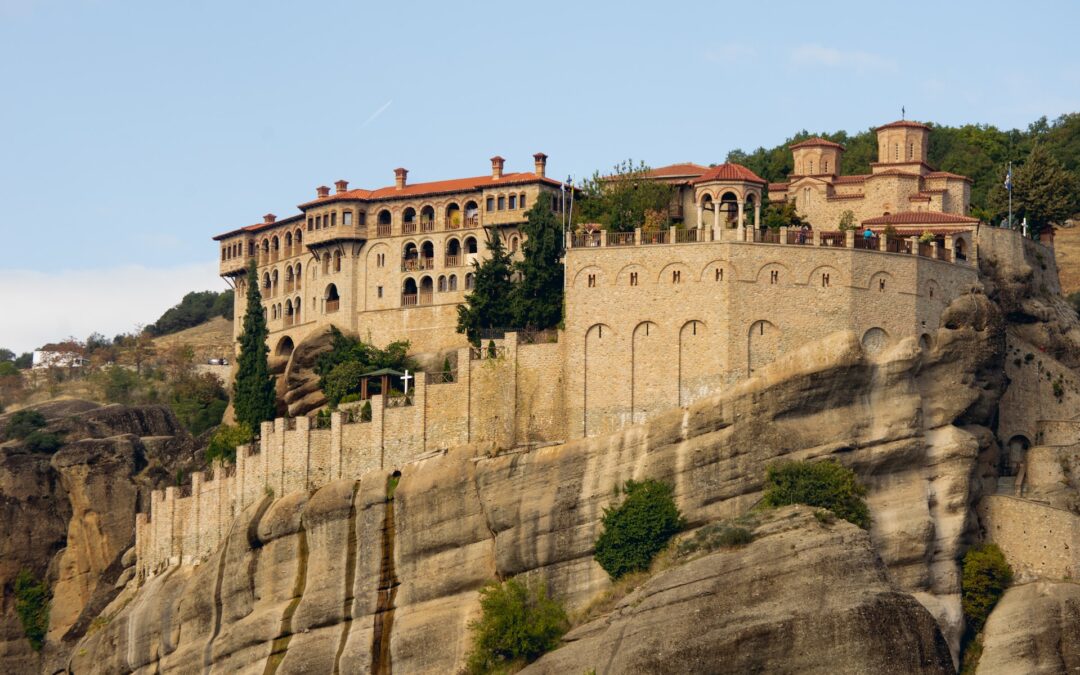Originally the remit of young male English aristocrats, the Grand Tour became a popular rite of passage through the 18th century, presenting an opportunity for people to immerse themselves in the art, architecture, and antiquity of Europe.
The curator of art at Royal Museums Greenwich Katherine Gazzard notes that the Grand Tour marked the conclusion of a young man’s education, which in those days would have been grounded in the Classics. During their travels, these young men would be exposed to classical ruins and ancient Greek and Latin texts. The Grand Tour was also an opportunity to absorb more recent art and culture, view Renaissance paintings, and see contemporary artists at work.
In the 19th century, industrialization in the United States heralded the Gilded Age, with young men and women from the nouveau riche, as well as those of more advanced years, gaining exposure to the sophistication of Europe.
The Grand Tour is popular among all kinds of tourists today. Read on for a selection of some lesser-known, but no less spectacular, European destinations no 21st-century Grand Tour itinerary should miss.
1. The Picos de Europa – Spain
A national park located in Northern Spain, the Picos de Europa mountain range spans parts of Asturias, Cantabria, and Castilla y León. These peaks were one of the first land features sailors returning from the Americas would see, which is what earned the region its name.
One of Spain’s best-kept secrets, the Picos de Europa range is home to high massifs, plunging ravines, lush mountain meadows, and vast mirror-like lakes. It is also home to an array of wildlife, including golden eagles, wild boar, deer, chamois, otters, salmon, and trout.
In 2003 the Picos de Europa range was declared a Biosphere Reserve by UNESCO. Its high passes are home to a handful of small villages, including Bulnes, which up until 2001 was only accessible by hiking a long, steep mountain trail.
2. Florence – Italy
Whether standing on the Piazzale Michelangelo, gazing across the cityscape, or in the middle of the city, looking down the River Arno, Florence is filled with breathtaking views and stunning green spaces.
Located near the Piazzale Michelangelo, the Giardino delle Rose is a can’t-miss destination. The gardens are filled with 350 species of roses, as well as fragrant lemon groves.
Boasting a fascinating culture of art and history, Florence is renowned as the birthplace of the Renaissance and a paradise for art lovers. When it comes to viewing priceless works of art, tourists can visit the Uffizi Gallery, the Accademia Gallery, and the Bargello Museum. However, since the city’s galleries and museums are incredibly popular all year round, it is advisable to book tickets in advance.
3. Meteora – Greece
Designated as a cultural UNESCO World Heritage Site in 1988, Meteora is one of the most spectacular sights in all of Greece. Located in Thessaly, Meteora is characterized by gargantuan rock formations topped with monasteries. Situated in the heart of the mainland, Meteora’s picturesque village is built amphitheatrically, meaning it is surrounded by the towering rock formations and their monastic communities.
Meteora’s rock formations were shaped by the wind and rain over millions of years. Six of the original 30 monasteries are still functioning today, but tourists can visit all of them.
Meteora is renowned for its stunning sunsets, as well, as the colorful skies form the perfect backdrop to the striking landscape.
4. Sintra – Portugal
Nestled in the hills of the Serra de Sintra, this charming Portuguese town is shielded from the outside world by the sprawling pine forest that surrounds it. Here, visitors can explore extravagant villas, multiple palace complexes, and the sprawling ruins of a 10th-century Moorish castle. Highlights of this stunning UNESCO World Heritage Site include Monserrate Palace, Pena Palace, and Quinta da Regaleira.
Situated 15 miles west of Lisbon, Sintra has long provided respite from the heat, dust, and noise of the Portuguese capital. Lord Byron once described it as “the most beautiful village in the world.”
5. Rouen – France
With enchanting painted houses lining the streets, Rouen is a fascinating French city to visit. The capital of the Normandy region of France, Rouen oozes culture, beauty, and charm.
Rouen’s cathedral dates back to the 12th century and is free to enter. One of the oldest buildings in the city, it is famous for its Gothic architecture. The Gothic Church of Saint-Maclou, also free to enter, is no less magnificent.
For those interested in botany, Jardin des Plantes de Rouen is the ideal place to spend an afternoon. It features plants from five continents, water fountains, and a boating lake.

